What are Gas Giants?
Gas giants are a type of planet that are primarily composed of hydrogen and helium, with small amounts of other elements. These planets are also known as "Jovian planets," named after the largest planet in our solar system, Jupiter. Gas giants are typically massive, with thick atmospheres and no solid surface.Characteristics of Gas Giants
Gas giants have several distinct characteristics:- Composition: They are composed mostly of hydrogen and helium, similar to the composition of the sun.
- Atmosphere: They have thick atmospheres made up of layers of gas, including clouds and storms.
- Size: Gas giants are large in size, with diameters much greater than that of Earth.
- Moons: They often have a large number of moons orbiting around them.
- Rings: Some gas giants have rings, similar to Saturn's famous ring system.
Examples of Gas Giants
The gas giants in our solar system include:- Jupiter: The largest planet in our solar system, known for its iconic Great Red Spot and numerous moons.
- Saturn: Recognizable by its extensive ring system and diverse collection of moons.
- Uranus: Tilted on its side, Uranus is unique among the gas giants and has a bluish-green hue due to the presence of methane in its atmosphere.
- Neptune: The farthest gas giant from the sun, known for its deep blue color and powerful storms, such as the Great Dark Spot.
Study Guide
To study gas giants effectively, consider the following topics:- Compare and contrast the characteristics of gas giants with those of terrestrial planets like Earth.
- Investigate the atmospheric compositions and weather patterns of specific gas giants, such as Jupiter's Great Red Spot or Neptune's Great Dark Spot.
- Examine the moons and ring systems of gas giants, and how they differ from planet to planet.
- Research the exploration of gas giants by spacecraft, such as the Voyager and Cassini missions.
- Explore the potential for exoplanets that resemble gas giants in other solar systems.
[Gas Giants] Related Worksheets and Study Guides:
.◂Science Worksheets and Study Guides Sixth Grade. Sponges, Cnidarians and Worms
Study Guide Sponges, Cnidarians and Worms
Sponges, Cnidarians and Worms  Activity Lesson
Activity Lesson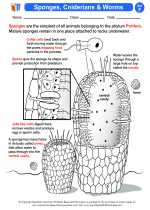 Sponges, Cniderians & Worms
Sponges, Cniderians & Worms  Worksheet/Answer key
Worksheet/Answer key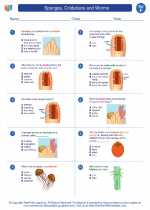 Sponges, Cnidarians and Worms
Sponges, Cnidarians and Worms  Worksheet/Answer key
Worksheet/Answer key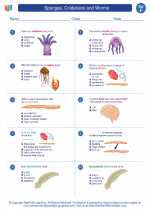 Sponges, Cnidarians and Worms
Sponges, Cnidarians and Worms  Worksheet/Answer key
Worksheet/Answer key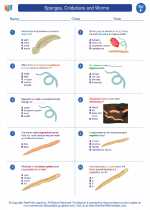 Sponges, Cnidarians and Worms
Sponges, Cnidarians and Worms  Worksheet/Answer key
Worksheet/Answer key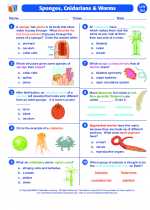 Sponges, Cnidarians and Worms
Sponges, Cnidarians and Worms  Vocabulary/Answer key
Vocabulary/Answer key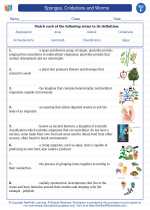 Sponges, Cnidarians and Worms
Sponges, Cnidarians and Worms  Vocabulary/Answer key
Vocabulary/Answer key Sponges, Cnidarians and Worms
Sponges, Cnidarians and Worms  Vocabulary/Answer key
Vocabulary/Answer key Sponges, Cnidarians and Worms
Sponges, Cnidarians and Worms  Vocabulary/Answer key
Vocabulary/Answer key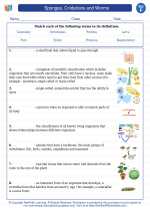 Sponges, Cnidarians and Worms
Sponges, Cnidarians and Worms 

 Activity Lesson
Activity Lesson
 Worksheet/Answer key
Worksheet/Answer key
 Worksheet/Answer key
Worksheet/Answer key
 Worksheet/Answer key
Worksheet/Answer key
 Worksheet/Answer key
Worksheet/Answer key
 Vocabulary/Answer key
Vocabulary/Answer key
 Vocabulary/Answer key
Vocabulary/Answer key
 Vocabulary/Answer key
Vocabulary/Answer key
 Vocabulary/Answer key
Vocabulary/Answer key

The resources above cover the following skills:
LIFE SCIENCE
From Molecules to Organisms: Structures and Processes